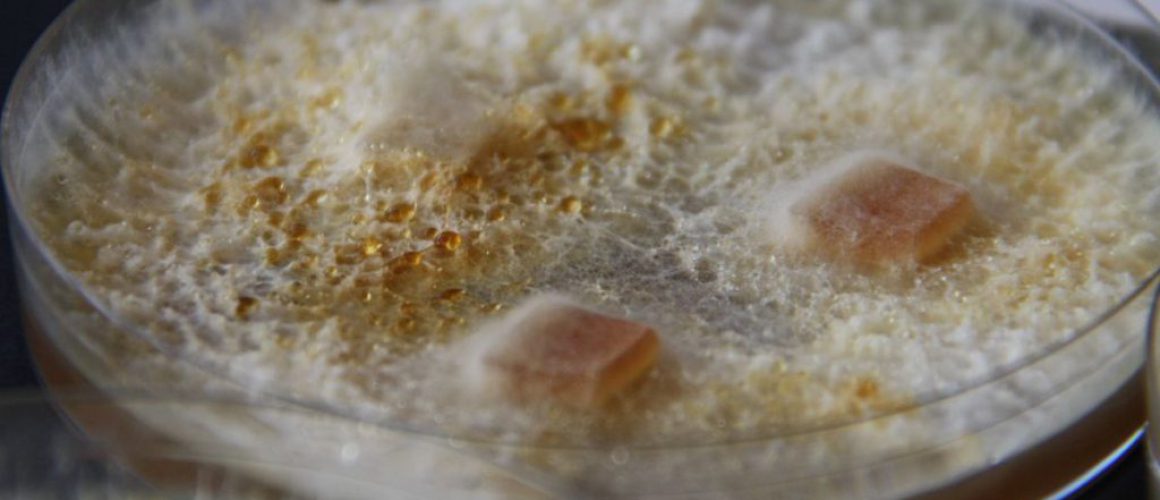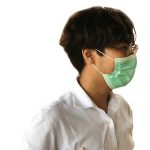Mycology: More than just mushrooms
Table of Contents
Key Summary Table: Mycology: More than just mushrooms
| Section | Key Points |
|---|---|
| What is Mycology? | Study of fungi, including mushrooms, yeasts, molds. Fungi play crucial roles in ecological processes and industrial processes. |
| The Role of Mycology in Medical Technology | Mycology helps in identifying fungi causing diseases and in the development of antifungal drugs. |
| Fungal Diseases and Their Impact on Health | Fungal diseases range from minor skin conditions to life-threatening systemic infections. |
| Antifungal Drugs and Treatment of Fungal Diseases | Antifungal drugs target specific aspects of a fungus’s biology. Developing new antifungal drugs is challenging due to the close evolutionary relationship between fungi and humans. |
| Prevention of Fungal Diseases | Prevention involves personal hygiene habits, environmental controls, and preventive antifungal therapy. |
| The Future of Mycology: Emerging Research and Developments | The field of mycology promises to be an exciting frontier of discovery with advancements in technology and a growing understanding of the fungal kingdom. |
Dive into the fascinating world of mycology. Discover the intersection of mycology and health, from the role of fungi in disease to the development of antifungal drugs.
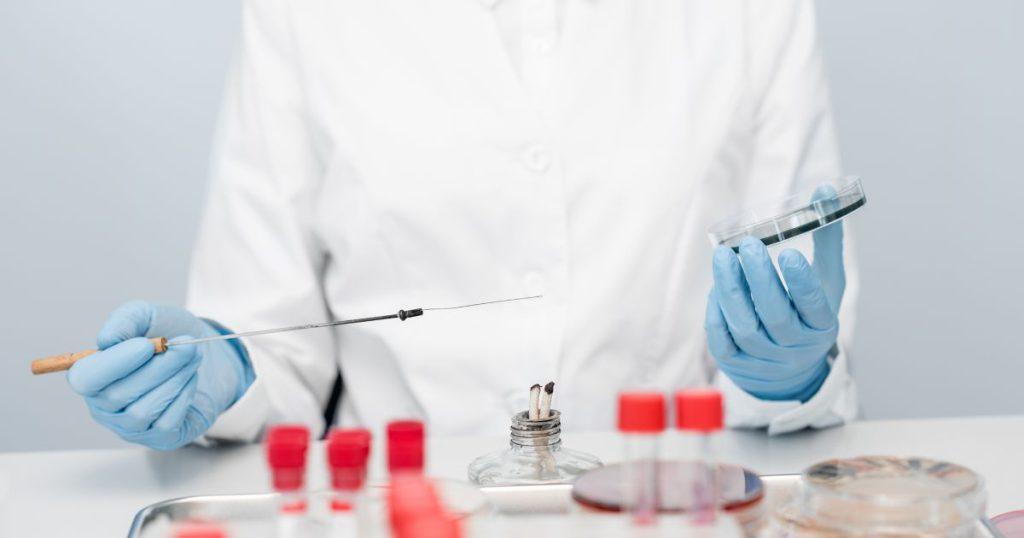
Introduction
When you hear the term “mycology,” what comes to mind? For many, the immediate association is with mushrooms. While this isn’t incorrect, mycology encompasses so much more. Mycology is the scientific study of fungi, a kingdom of organisms that includes not only mushrooms but also yeasts, molds, and many other types of fungi. In this blog post, we’ll delve into the fascinating world of mycology, its relevance in medical technology, and its impact on our health.
Mycology, in its simplest form, is the study of fungi. But if you think it’s just about mushrooms, you’re only scratching the surface.
What is Mycology?
Types of Fungi Studied in Mycology
| Type of Fungi | Examples |
|---|---|
| Mushrooms | Agaricus, Amanita |
| Yeasts | Saccharomyces, Candida |
| Molds | Aspergillus, Penicillium |
Mycology, in its simplest form, is the study of fungi. But if you think it’s just about mushrooms, you’re only scratching the surface. Mycology is a fascinating branch of biology that delves into the world of organisms that are incredibly diverse and, dare I say, somewhat misunderstood.
Fungi, the stars of the mycological show, are a group of organisms that are quite unlike anything else you might encounter in a biology textbook. They’re not plants, they’re not animals, and they’re certainly not bacteria. They occupy their own little corner in the biological world, and it’s a corner that’s teeming with variety and intrigue.
From the mushrooms that might spring to mind when you first hear the word ‘fungi’, to the less visible but equally important yeasts and molds, the world of fungi is a biological treasure trove. Each type of fungus has its own unique characteristics and functions, making the study of fungi a constantly evolving field that’s ripe for exploration.
Roles of Fungi in Ecological Processes
| Role | Description |
|---|---|
| Decomposers | Break down dead organic material and recycle nutrients back into the ecosystem |
| Mutualists | Form symbiotic relationships with plants, aiding in nutrient absorption |
But mycology isn’t just about studying fungi in isolation. It’s about understanding the crucial roles that these organisms play in various ecological processes. Fungi are nature’s decomposers, breaking down dead organic material and recycling nutrients back into the ecosystem. Without them, we’d be knee-deep in waste, and the cycle of life would grind to a halt.
And it’s not just in the natural world where fungi make their mark. They’re also of significant importance in many industrial processes. Yeasts, for example, are crucial in the production of bread, beer, and biofuels. Other types of fungi are used in the production of antibiotics and other pharmaceuticals.
Then there’s the impact of fungi on human health. On the one hand, some fungi are beneficial to humans, playing a role in the production of life-saving drugs. On the other hand, some fungi can cause diseases, ranging from minor skin conditions to life-threatening systemic infections, particularly in individuals with compromised immune systems.
So, mycology, the study of fungi, is a field that spans ecology, industry, and medicine. It’s a field that’s as diverse as the organisms it studies, and one that holds the key to understanding many of the processes that are fundamental to life on Earth. It’s more than just mushrooms—it’s a deep dive into a world that’s teeming with life, intrigue, and endless possibilities for discovery.

The Role of Mycology in Medical Technology
Mycology, the study of fungi, is a fascinating field that intertwines with medical technology in ways that are often overlooked. It’s not just about mushrooms in the forest or the yeast we use in our bread. No, my friends, it’s much more than that. In the realm of medical technology, mycology takes on a role of critical importance, and here’s why.
As medical technologists, we’re like detectives in a world invisible to the naked eye. We delve into clinical samples, searching for clues that might reveal the cause of a patient’s symptoms. And guess what? Fungi are often part of the lineup. They’re there, lurking in the samples, waiting to be identified. But they’re not there for us to point fingers and blame for an infection. No, they’re there to help us understand what’s going wrong in a patient’s body.
Identifying these microscopic culprits is no small task. It requires a deep understanding of the diverse world of fungi. Each species has its own unique characteristics – its morphology, its preferred environment, its way of reproducing. Knowing these traits allows us to pinpoint exactly what we’re dealing with. Is it Candida causing a case of thrush? Or perhaps Aspergillus, a common culprit in lung infections? The answers to these questions can guide a physician’s treatment plan.
But the role of mycology in medical technology doesn’t stop at diagnosis. Oh no, it extends much further. You see, understanding fungi isn’t just about knowing what they look like or where they like to hang out. It’s also about understanding their life cycles, their behaviors, and their interactions with the human body. This knowledge is crucial in the battle against fungal diseases.
Take antifungal drugs, for example. These medications are designed to target specific aspects of a fungus’s biology. Maybe it’s a component of the cell wall that’s unique to fungi, or perhaps it’s a process in the fungal life cycle that we can interrupt. Either way, developing these drugs requires a deep understanding of mycology. Without it, we’d be shooting in the dark.
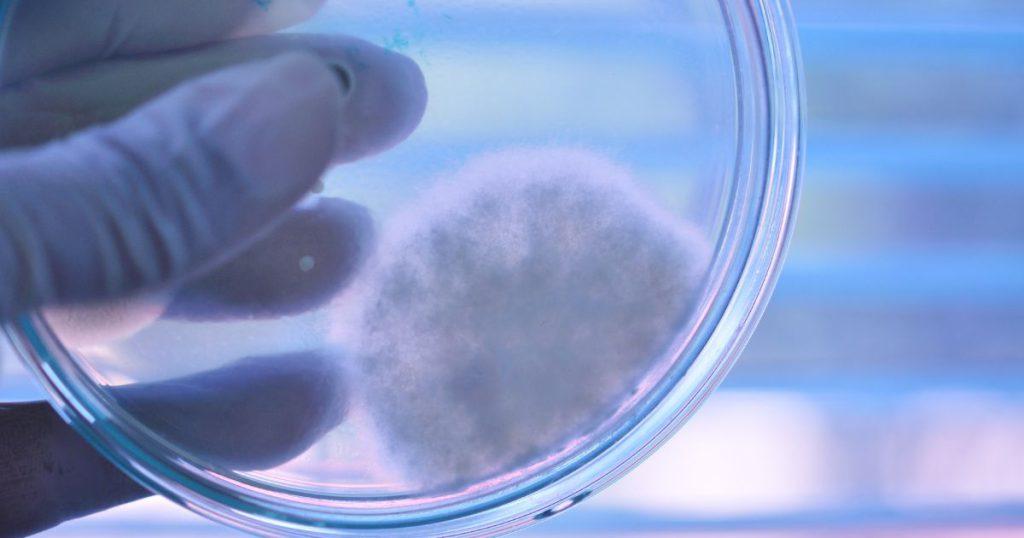
Fungal Diseases and Their Impact on Health
| Disease | Causing Fungus | Impact on Health | Symptoms | Treatment |
|---|---|---|---|---|
| Athlete’s foot | Trichophyton | Skin infection, itchiness | Itching, stinging, and burning between your toes or on soles of your feet, blisters on your feet, cracking and peeling skin on your feet, especially between your toes and on your soles | Antifungal medications, good foot hygiene |
| Ringworm | Dermatophytes | Skin infection, rash | Red, itchy, scaly, circular rash, hair loss at the site of the rash (for scalp ringworm) | Antifungal creams or oral medication |
| Thrush (Oral Candidiasis) | Candida | Oral infection, difficulty swallowing | White, bumpy patches on tongue, inner cheeks, gums, tonsils, or throat, soreness or burning in the mouth or back of the throat, difficulty swallowing | Antifungal medication, good oral hygiene |
| Aspergillosis | Aspergillus | Can cause severe lung and systemic infections | Fever, cough, chest pain, breathlessness | Antifungal medication, sometimes surgery |
| Candidiasis (systemic) | Candida | Can cause severe systemic infections, especially in immunocompromised individuals | Fever, chills, skin and mucous membrane infections, sepsis in severe cases | Antifungal medication |
| Histoplasmosis | Histoplasma | Lung infection, can be severe in immunocompromised individuals | Fever, cough, fatigue, chills, headache, chest pain | Antifungal medication for severe cases, mild cases often resolve on their own |
| Pneumocystis Pneumonia | Pneumocystis jirovecii | Severe lung infection, especially in immunocompromised individuals | Fever, cough, difficulty breathing, fatigue | Antifungal medication, often combined with steroids to reduce inflammation |
Fungal diseases, or mycoses as they’re scientifically known, are a fascinating yet often overlooked area of study. They’re a diverse bunch, ranging from the relatively benign to the downright deadly. You might be familiar with the more common ones like athlete’s foot or ringworm – conditions that, while irritating, are generally not life-threatening. But the world of mycoses extends far beyond these everyday annoyances, delving into diseases that can have serious, even fatal, consequences.
Take invasive aspergillosis, for instance. This is a severe infection caused by a type of fungus called Aspergillus, which is commonly found in the environment around us. Most people breathe in Aspergillus spores every day without getting sick. However, for individuals with weakened immune systems – such as those undergoing chemotherapy or organ transplants – these spores can cause serious harm. The fungus can invade and damage organs in the body, most commonly the lungs. If it spreads to other parts of the body, like the brain or heart, the results can be fatal.
Then there’s cryptococcal meningitis, a brain infection caused by the fungus Cryptococcus. This fungus is found in soil around the world, and it’s particularly associated with bird droppings. Most people who are exposed to it will never get sick, but, similar to Aspergillus, Cryptococcus can cause severe disease in people with weakened immune systems. Cryptococcal meningitis is a serious condition that can cause a range of symptoms, from fever and headache to more severe problems like confusion, hallucinations, and even coma.
And these are just two examples. There are many other types of fungal diseases out there, each with its own unique characteristics and impacts on health. Some primarily affect the skin, causing rashes, blisters, and itchiness. Others can affect the lungs, leading to cough, chest pain, and difficulty breathing. And some, like the ones I’ve mentioned, can invade deep into the body, causing severe, systemic disease.
Antifungal Drugs and Treatment of Fungal Diseases
| Antifungal Drug | Target in Fungi |
|---|---|
| Amphotericin B | Fungal cell membrane |
| Fluconazole | Fungal enzyme involved in cell membrane synthesis |
When it comes to the treatment of fungal diseases, we’re often looking at the use of antifungal drugs. Now, these aren’t your everyday over-the-counter medications. These are specialized pharmaceuticals designed to wage war against the fungi that have decided to set up camp in our bodies.
The way these drugs work is fascinating. They exploit the differences between the cells of fungi and human cells. It’s a bit like finding the chink in the armor of an enemy, a weak spot that can be targeted without causing harm to the rest of the organism. The drugs are designed to attack and kill the fungi, while leaving our human cells unscathed. It’s a delicate balancing act, a dance of biological warfare that’s as intricate as it is effective.
But here’s the kicker. Developing new antifungal drugs isn’t a walk in the park. It’s a challenging task that keeps scientists on their toes. Why, you ask? Well, it all comes down to our family tree. Fungi and humans share a close evolutionary relationship. We’re like distant cousins in the grand scheme of life. This means that our cellular structures have a lot in common, making it difficult to find targets for antifungal drugs that won’t also harm human cells.
Imagine trying to design a key that fits into one specific lock, but not into another lock that’s almost identical. That’s the challenge faced by scientists in the field of antifungal drug development. It’s a complex task that requires a deep understanding of both human and fungal biology, as well as a hefty dose of creativity.
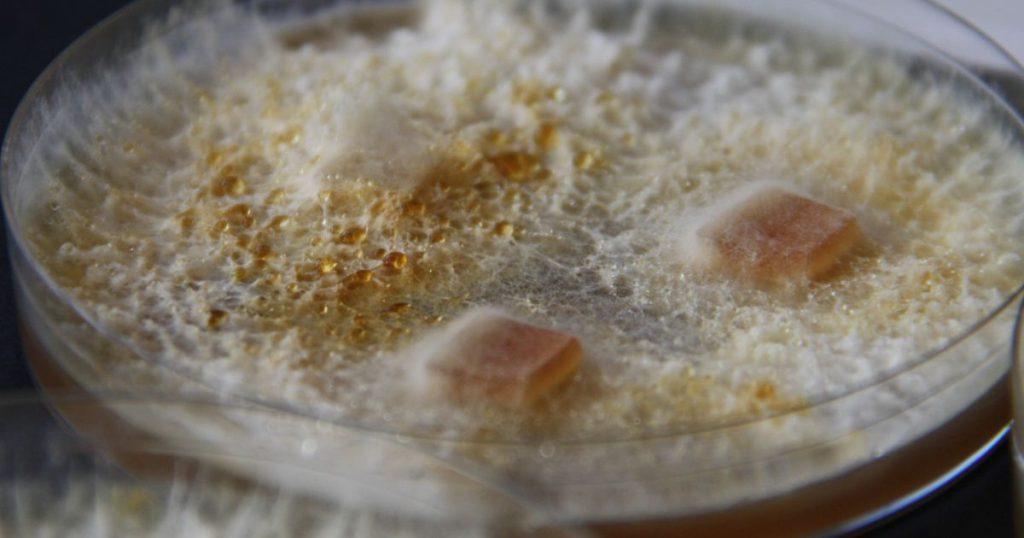
Prevention of Fungal Diseases
Preventing fungal diseases is no small task. It’s a multifaceted endeavor that requires a blend of personal hygiene habits, environmental controls, and occasionally, preventive antifungal therapy. Now, you might be thinking, “Why all the fuss?” Well, let me tell you, for individuals with compromised immune systems, these preventive measures are not just important, they’re downright crucial to stave off severe fungal infections.
Let’s start with personal hygiene, the first line of defense. It’s all about keeping things clean and dry. Fungi love warm, moist environments, so keeping our bodies and our surroundings dry is a key step in preventing fungal growth. This means drying off thoroughly after showers, wearing breathable clothing, and changing socks and underwear regularly. It might sound basic, but these simple steps can make a world of difference.
Next up, environmental controls. This is all about managing our surroundings to make them less inviting for fungi. It involves actions like ensuring good ventilation in our homes to prevent dampness, regularly cleaning and disinfecting surfaces, and being mindful of areas prone to fungal growth, like bathrooms and kitchens. If you’re a plant lover like me, be careful with indoor plants as they can sometimes harbor mold.
Lastly, there’s prophylactic antifungal therapy. This is a fancy way of saying preventive treatment with antifungal drugs. It’s not for everyone, but for those with weakened immune systems, it can be a lifesaver. These individuals are more susceptible to fungal infections, so doctors may prescribe antifungal medication as a preventive measure. It’s like having a security guard that keeps the fungal invaders at bay.
Methods for Preventing Fungal Diseases
- Maintaining personal hygiene
- Controlling environmental conditions
- Prophylactic antifungal therapy
The Future of Mycology: Emerging Research and Developments
The world of mycology is a fascinating one, and it’s constantly changing. It’s like a vast, unexplored forest, with new species of fungi being discovered all the time. And with each new discovery, we’re finding out more about how these organisms interact with our world and our bodies.
But it’s not just about discovering new species. It’s also about understanding how fungi work, how they affect us, and how we can use them to our advantage. This is where the real excitement lies in the field of mycology. It’s like being a detective, piecing together the clues to solve the mysteries of these complex organisms.
One of the most promising areas of research in mycology is in the development of new antifungal drugs. Fungal infections can be incredibly difficult to treat, and we’re in desperate need of new treatments. Researchers are now looking at fungi themselves for answers. Some fungi produce compounds that can kill or inhibit the growth of other fungi. By studying these compounds, scientists hope to develop new drugs that can effectively combat fungal infections.
Another exciting area of research is in the field of biotechnology. Fungi have some amazing abilities. They can break down complex organic materials, like wood and plant matter, and they can produce a wide range of chemicals. Scientists are now trying to harness these abilities to create new technologies. For example, fungi could be used to break down agricultural waste and turn it into biofuels. They could also be used to produce new types of antibiotics or other drugs.
But perhaps the most exciting development in mycology is the growing recognition of the importance of fungi in our lives. For too long, fungi have been overlooked and misunderstood. But now, we’re starting to realize just how crucial they are. They play a vital role in our ecosystems, helping to break down dead material and recycle nutrients. They’re also incredibly important for our health. The fungi that live on and in our bodies, known as the mycobiome, play a crucial role in our immune system and overall health.
As medical technologists, we’re like detectives in a world invisible to the naked eye. We delve into clinical samples, searching for clues that might reveal the cause of a patient’s symptoms.
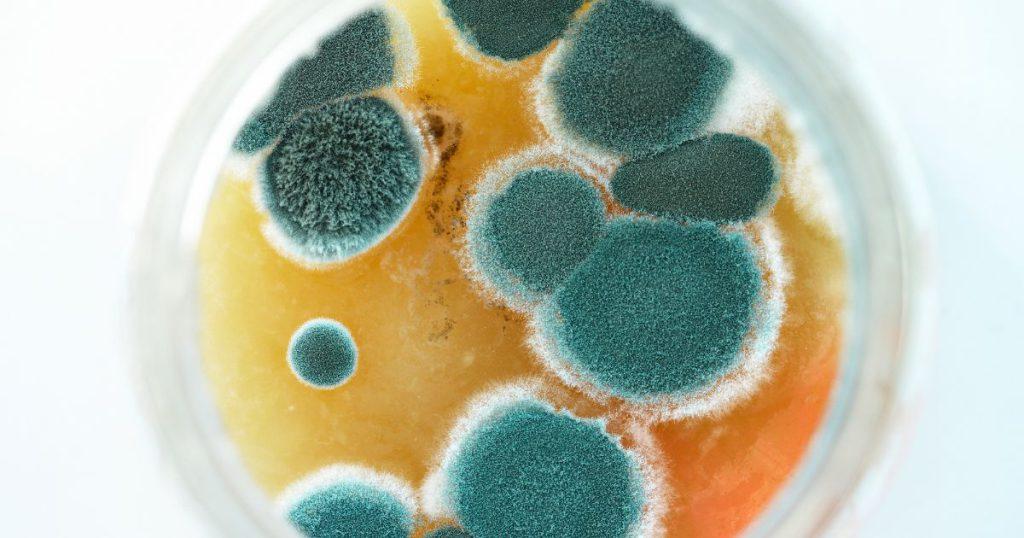
Conclusion
As we delve deeper into the world of mycology, it becomes abundantly clear that this field is not just about studying mushrooms in a forest. It’s about understanding an entire kingdom of life that is intricately woven into the fabric of our existence. Fungi, in all their diverse forms, play a crucial role in our ecosystems, our industries, and most importantly, our health. They are the silent partners in our world, often overlooked, but always present and always significant.
The intersection of mycology with human health and medical technology is a testament to the profound impact these organisms have on our lives. From the yeast that helps us bake our bread to the molds that produce life-saving antibiotics, fungi are integral to our survival. But they can also be our adversaries, causing diseases that challenge our medical prowess. As we continue to unravel the mysteries of fungi, we equip ourselves with the knowledge to combat these challenges and harness the beneficial aspects of these remarkable organisms.
Looking ahead, the field of mycology promises to be an exciting frontier of discovery. With advancements in technology and a growing understanding of the fungal kingdom, we are poised to uncover more about these fascinating organisms. As we continue to explore this path, we can expect to deepen our understanding of the intricate relationship between fungi and human health. So, the next time you see a mushroom in the wild, remember, you’re looking at just the tip of the mycological iceberg. There’s a whole world of fungi out there, waiting to be discovered and understood.
This post is part of my Mycology category. Please check out my index page on mycology
Other posts of interest: Fungal reproduction and life cycles and Fungal classification and taxonomy
Disclaimer: This blog post is intended for informational purposes only and does not constitute medical advice. Always consult with a healthcare professional for medical advice.
Frequently Asked Questions
What is Mycology?
Mycology is the scientific study of fungi, which includes not only mushrooms but also yeasts, molds, and many other types of fungi. It is a branch of biology that explores the diverse world of fungi and their roles in various ecological processes.
How does Mycology relate to Medical Technology?
In the realm of medical technology, mycology plays a critical role. Medical technologists often need to identify fungi in clinical samples, which can be the cause of a patient’s symptoms. Understanding the life cycles, behaviors, and interactions of fungi with the human body is crucial in the battle against fungal diseases.
What are some common fungal diseases and their impact on health?
Fungal diseases, or mycoses, range from minor skin conditions to life-threatening systemic infections. Examples include invasive aspergillosis, a severe infection that can damage organs in the body, and cryptococcal meningitis, a brain infection. Both diseases can be particularly harmful to individuals with weakened immune systems.
How are fungal diseases treated?
Fungal diseases are often treated with antifungal drugs. These medications are designed to target specific aspects of a fungus’s biology without harming human cells. The development of these drugs requires a deep understanding of mycology.
What are some preventive measures against fungal diseases?
Preventing fungal diseases involves personal hygiene habits, environmental controls, and occasionally, preventive antifungal therapy. Keeping bodies and surroundings dry, ensuring good ventilation in homes, regularly cleaning and disinfecting surfaces, and for those with weakened immune systems, taking prescribed antifungal medication can all help prevent fungal infections.
What is the future of Mycology?
The future of mycology is promising, with new species of fungi being discovered all the time. Research is ongoing in the development of new antifungal drugs, the use of fungi in biotechnology, and the study of the mycobiome, the community of fungi that live on and in our bodies and play a crucial role in our immune system and overall health.
Research papers
- “Revised Definitions of Invasive Fungal Disease from the European Organization for Research and Treatment of Cancer/Invasive Fungal Infections Cooperative Group and the National Institute of Allergy and Infectious Diseases Mycoses Study Group (EORTC/MSG) Consensus Group” by Ben E. De Pauw, et al. This paper discusses the definitions of invasive fungal diseases, which are important causes of morbidity and mortality.
- “Defining breakthrough invasive fungal infection–Position paper of the mycoses study group education and research consortium and the European Confederation of Medical Mycology” by Oliver A. Cornely, et al. This paper establishes definitions of breakthrough invasive fungal infection for clinical research.
- “Fungal Diseases in the 21st Century: The Near and Far Horizons” by Arturo Casadevall. This essay considers the future of medical mycology in the 21st century, extrapolating from current trends.
- “A Case of Topical Ofloxacin-Induced Otomycosis and Literature Review” by Mohamed Mahdi Alshahni Teikyo University
Sean Schepers is a third-year Medical Technology student at Mahidol University with a passion for all things health and medicine. His journey into the world of medicine has led him to explore various fields. Sean's blog posts offer a unique perspective, combining his academic insights with personal experiences. When he's not studying or blogging, Sean enjoys keeping up with politics and planning his future career in medicine.
In addition to his studies, Sean serves as the chairman of the Rights, Liberties, and Welfare Committee, a role that reflects his commitment to advocacy and social justice. Beyond his academic pursuits, Sean offers tutoring services in English and Biology, further demonstrating his dedication to education and mentorship. His journey is one of continuous discovery, and he invites others to join him as he explores the dynamic and transformative world of medical technology.

